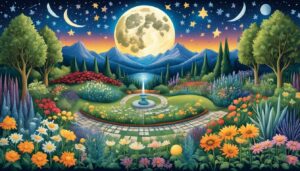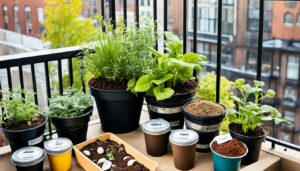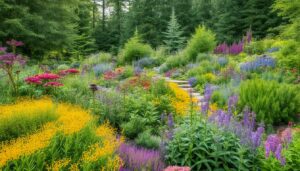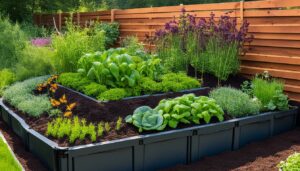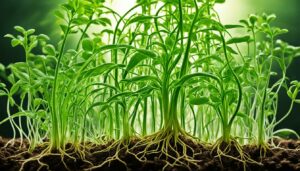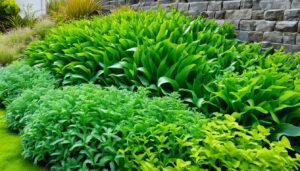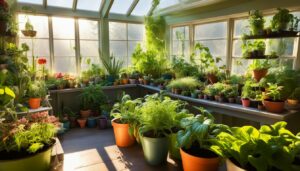Edible flowers, an art as ancient as the hills, are blooming into prominence, seducing both gourmands and green thumbs. Long considered mere eye candy, these natural beauties are carving a niche in contemporary kitchens, adding color and flavor that transform dishes into multisensory experiences. Beyond their ornamental charm, these botanicals carry a symphony of flavors – from the subtle whispers of sweet to the bold declarations of spice. With a resurgence of interest in flowers in cuisine, the modern plate is becoming a canvas for both edible flower arrangements and gastronomic innovation. Aspiring culinary artists are not only plating up splendor but turning towards culinary gardening and edible landscaping to cultivate their own edible blossoms. The question then emerges, how can the vibrance of a marigold or the delicacy of a pansy elevate your culinary creations?
Key Takeaways
- Edible flowers offer a historical richness and contemporary revival in the culinary arts.
- These blooms contribute unexpected flavor notes and aesthetic value to dishes.
- Integration of flowers in cuisine is not only visually appealing but can enhance nutrition.
- Culinary gardening and edible landscaping allow for personalization and purity in flower usage.
- The diversity of edible flowers means there’s a botanical match for virtually any dish.
- Edible flower arrangements serve as both garnishes and focal points in gourmet creations.
The Historical and Nutritional Significance of Edible Flowers
The relationship between humans and edible flowers is steeped in a rich tapestry of culinary history and traditional foods. Since antiquity, flowers have been incorporated into diets across civilizations, both for their flavors and medicinal properties.
The Longstanding Tradition of Flowers in Cuisine
Delving into the flowers in traditional cuisine, we unearth a practice that spans several cultures. The Romans were known for their feasts featuring floral elements, while the Asians used blossoms like the chrysanthemum to brew calming teas. In the Victorian era, flowers were enmeshed in the art of presentation, and petals adorned the most elegant dishes. This historical usage of blooms has paved the way for the delightful edible flower recipes savored in our times.
Nutritional Benefits of Incorporating Edible Flowers into Your Diet
Today’s health-conscious epicureans appreciate not just the aesthetic appeal of flowers but equally value their nutritional benefits. Incorporating edible flowers in diet is not just about garnishing; it is about enriching the cuisine with vitamins and antioxidants. Noteworthy among these are dandelions, rich in vitamins A and C, and nasturtiums, which bring a bounty of vitamin C to the table.
Edible Flowers: A Fusion of Aesthetic Appeal and Health
Gourmet chefs and home cooks alike celebrate the dual advantages of edible flowers, which offer both an edible flower health benefits and an aesthetic appeal. The vibrant petals of pansies enhance the visual allure of a dish, while the subtle spicy flavor they provide pleases the palate, making gourmet edible flowers a culinary treasure in modern dishes.
Let’s explore some of the most beloved edible flowers and their contributions to well-being:
| Edible Flower | Health Benefits | Taste Profile |
|---|---|---|
| Calendula | Anti-inflammatory, soothes skin | Slightly peppery to tangy |
| Lavender | Reduces anxiety, aids digestion | Floral and slightly sweet |
| Rose | Rich in vitamin C, hydrates skin | Sweet and aromatic |
| Violet | High in vitamin C and A, antioxidants | Sweet and perfumed |
| Hibiscus | High in vitamin C, lowers blood pressure | Tart and cranberry-like |
The allure of edible flowers in contemporary cooking is more than a passing trend. It echoes the wisdom of bygone eras and melds it with today’s quest for cuisine that is as nourishing as it is beautiful.
Edible Flowers, Culinary Gardening, Edible Landscaping, Flowers in Cuisine
The practice of growing edible flowers is blossoming in gardens across the country. Not only do these plants offer a feast for the eyes, but they also bring a bounty of flavors to the dinner table. Engaging in culinary gardening and edible landscaping allows for the integration of beauty and taste within an arm’s reach of your kitchen. Whether you are a seasoned chef or a gardening enthusiast, you’ll find that the best edible flowers for cooking are those that complement your culinary style and satisfy your palate.
Understanding the nuances of floral cuisine will enhance the way you approach cooking with flowers. Here are some edible flower arrangement ideas for those looking to dive into this tasty trend:
- Create an edible flower garden plan, selecting flowers that thrive in your local climate.
- Experiment with different varieties, such as calendula for its spicy leaves or rose petals for their classic, sweet fragrance.
- Incorporate flowers into your meals, ranging from vibrant salads to decorative desserts.
When selecting flowers for your culinary endeavors, consider the following table that outlines some of the best edible flowers for cooking, each with its unique taste profile and recommended culinary uses:
| Edible Flower | Taste Profile | Culinary Use |
|---|---|---|
| Nasturtium | Peppery, similar to watercress | Salads, sandwiches, and garnishes |
| Lavender | Floral, slightly sweet | Desserts, teas, syrups |
| Borage | Mild cucumber | Cocktail garnishes, frozen in ice cubes |
| Viola (Pansies) | Mildly grassy | Dessert decorations, candied for pastries |
| Chive Blossoms | Onion flavor | Infused vinegars, dips, and spreads |
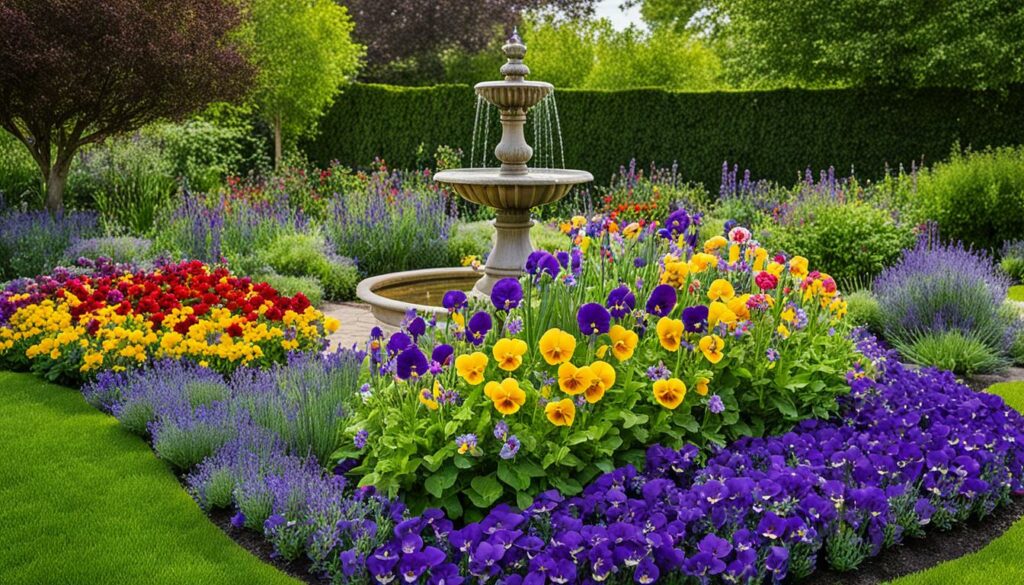
With this information, it’s easy to see how an edible flower can transform from a simple ingredient to a stunning culinary showpiece. From startlingly bright nasturtiums to delicate viola accents, the addition of edible flowers to your garden and plate can inspire endless culinary creativity. So, whether you’re a beginner or a professional chef, take advantage of the sensory delights that edible flowers can provide—starting with the earth beneath your feet all the way to the final elegant presentation on the plate.
Conclusion
The craft of cooking with edible flowers is both an innovative and time-honored approach to culinary arts that imparts an extraordinary dimension to home cooking. By infusing dishes with unique culinary ingredients, namely edible flower flavors, both seasoned chefs and passionate home cooks are redefining the boundaries of flavor. The vibrant character of these edible blooms is a boon to those looking to refresh their palate with unexpected zest and to present their culinary creations with flowers as visual masterpieces.
Revitalizing Your Cooking with Edible Flower Flavors
Edible flowers are more than just a visual treat; they are powerhouses of flavor that have the ability to revamp the very essence of a dish. The integration of petals that carry a citrusy zest or a peppery bite can awaken the senses, turning a routine meal into an unforgettable culinary experience. It is the surprise of these distinct flavors that makes cooking with edible flowers a journey of discovery for those seeking vigor and novelty on their plates.
Creating Edible Art: Edible Flowers on Your Plate
The concept of edible art truly comes to life when plates adorned with edible flowers serve as the canvas for gastronomic expression. Each petal serves a purpose, contributing not only to the total flavor profile but also adding a flourish of color and texture that elevates a dish to a work of art. Through the careful selection and placement of blooms, a simple plate of food is transformed into a dynamic visual and taste sensation that captivates and delights. By incorporating flowers into their gastronomic repertoire, culinarians can offer up a feast that pleases the eye as much as the palate.


